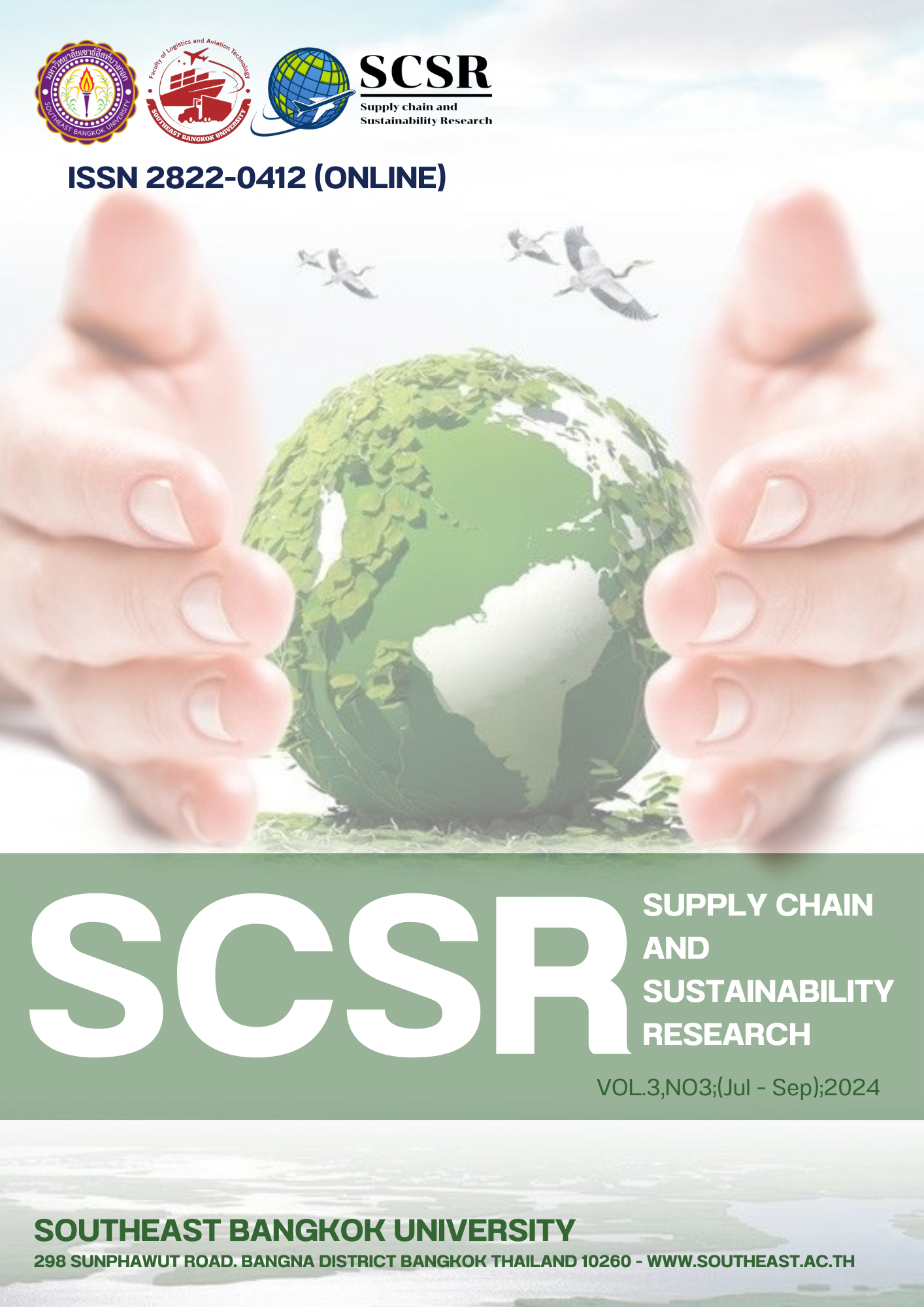Envisioning the Future of Supply Chain Transportation Management- Exploring Crowd Density Image Recognition with Deep Learning
Main Article Content
บทคัดย่อ
Over the past few decades, artificial intelligence (AI) technology has made significant progress, especially in image recognition and natural language processing. Deep learning, as a multi-level artificial neural network architecture, can automatically identify and learn data features through large amounts of data to achieve high-precision prediction and identification. This research aims to explore the practical application of deep learning in the field of image recognition, and designs an automated image recognition system, taking the identification of crowd density in a train carriage as an example. The system can accurately detect the number of passengers in each carriage, thereby optimizing urban rail transit strategies, ensuring even distribution of passengers and providing the best commuting experience. This technology also has important implications for supply chain management. Accurate people flow identification technology can improve resource utilization efficiency, optimize logistics resource allocation, and reduce transportation time and costs through real-time monitoring and prediction of people flow density. It can also improve demand forecasting and analyze historical data through deep learning algorithms to help companies predict demand more accurately and avoid excessive transportation and shared traffic. This technology enhances supply chain transparency and promotes sustainable development by monitoring the entire transportation process in real time. These applications can improve the operational efficiency of the transportation system and significantly improve the quality and efficiency of supply chain management, demonstrating the huge potential of deep learning technology in modern supply chain management.
Article Details

อนุญาตภายใต้เงื่อนไข Creative Commons Attribution-NonCommercial-NoDerivatives 4.0 International License.
บทความนี้ได้รับการเผยแพร่ภายใต้สัญญาอนุญาต Creative Commons Attribution-NonCommercial-NoDerivatives 4.0 International (CC BY-NC-ND 4.0) ซึ่งอนุญาตให้ผู้อื่นสามารถแชร์บทความได้โดยให้เครดิตผู้เขียนและห้ามนำไปใช้เพื่อการค้าหรือดัดแปลง หากต้องการใช้งานซ้ำในลักษณะอื่น ๆ หรือการเผยแพร่ซ้ำ จำเป็นต้องได้รับอนุญาตจากวารสารเอกสารอ้างอิง
Behrooz, H., & Hayeri, Y. M. (2022). Machine learning applications in surface transportation systems: A literature review. Applied Sciences, 12(18), 9156.
Goodfellow, I., Bengio, Y., & Courville, A. (2016). Deep learning. MIT Press.
Hinton, G. E., Osindero, S., & Teh, Y. W. (2006). A fast learning algorithm for deep belief nets. Neural Computation, 18(7), 1527-1554.
Krizhevsky, A., Sutskever, I., & Hinton, G. E. (2012). ImageNet classification with deep convolutional neural networks. Advances in Neural Information Processing Systems, 25(7), 1097-1105.
LeCun, Y., Bengio, Y., & Hinton, G. (2015). Deep learning. Nature, 521(7553), 436-444.
Liu, W., Anguelov, D., Erhan, D., Szegedy, C., Reed, S., Fu, C. Y., & Berg, A. C. (2016). Ssd: Single shot multibox detector. In Computer Vision–ECCV 2016: 14th European Conference, Amsterdam, The Netherlands, October 11–14, 2016, Proceedings, Part I 14 (pp. 21-37). Springer International Publishing.
Lu, K., Han, B., & Zhou, X. (2018). Smart urban transit systems: from integrated framework to interdisciplinary perspective. Urban Rail Transit, 4, 49-67.
Murphy, K. P. (2012). Machine learning: A probabilistic perspective. MIT Press.
Redmon, J., Divvala, S., Girshick, R., & Farhadi, A. (2016). You only look once: Unified, real-time object detection. Proceedings of the IEEE Conference on Computer Vision and Pattern Recognition, 2016(6), 779-788.
Russell, S., & Norvig, P. (2022). Artificial Intelligence: A Modern Approach, 4th Global ed.
Schmidhuber, J. (2015). Deep learning in neural networks: An overview. Neural Networks, 61(1), 85-117.
Yang, X., Xue, Q., Ding, M., Wu, J., & Gao, Z. (2021). Short-term prediction of passenger volume for urban rail systems: A deep learning approach based on smart-card data. International Journal of Production Economics, 231, 107920.


